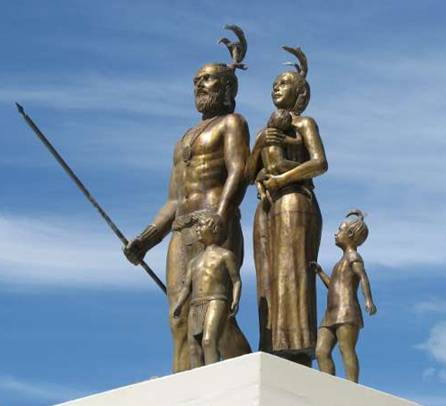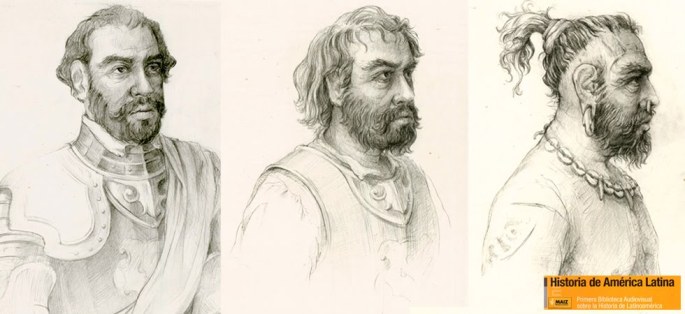Gonzalo Guerrero: the Spanish Mayan November 2, 2016
Author: Beach Combing | in : Modern , trackback
Gonzalo Guerrero was an obscure Spaniard who played several interesting roles in his life. He was, in chronological order: a poor Andalusian; a servant of the Spanish crown; a Mayan sacrificial victim; an escapee; a Mayan slave; a Mayan war leader; a Mayan father and husband; and, finally, (if we can believe the stories) food for battle crows. The event that transformed Guerrero’s life was a shipwreck. In 1511 he and a small crew were sailing, twenty years after Columbus’ first crossing, off Yucatán, when his ship was cast ashore, near Cozumel, in a storm.
This much is fact. Almost everything after is supposition and not a single word of Gonzalo’s comes directly to us, though he spoke and wrote to Spaniards until his death sometime in the 1530s. However, the smoke signals that blow through the histories of the Spanish Americas insist that he was first captured with the rest of the crew and that the local Mayans began to sacrifice their guests. Gonzalo escaped, was enslaved by other Mayans and then went native.
We are told that he tattooed himself like a Mayan, that he wore Mayan earrings and that he had three children (at least) with a Mayan woman: very possibly the first native-European children in the Americas proper. He also, it is claimed, led Mayan warriors in battle. There can be no question that he learnt the customs and the language of his new people. Of course, a Mayanised Spaniard would have been useful to the natives in the early sixteenth century. But if Gonzalo really became a battle leader then he was a resourceful man.
There are claims that Gonzalo Guerrero was behind some of the most successful Mayan resistance to the invaders. For example, it is stated that Francisco de Montejo failed to take Chetumal (on the first go) because Gonzalo was fighting on the other side and advised the locals how best to resist. But perhaps Gonzalo became an excuse or an explanation for conquistador mistakes? Certainly, the facts about Gonzalo’s battle experience are very difficult to pin down.
In one version of events Gonzalo died in 1532 repelling the Spanish. In another he died in 1536 fighting Pedro de Alvarado. His tattooed body was, it was claimed, found after the battle: he had been slain with an arquebus. But these are not first-hand accounts. Gonzalo Guerrero could as well have been alive in 1550 in the Guatemalan highlands; or perhaps he was already died in 1530 and he was never anything more than a favoured Mayan slave.
History is about retelling the past reliably. But Gonzalo Guerrero has been cast, in the last five hundred years, as renegade, nationalist hero, cipher, a warning to good Christians, military genius, traitor and father of the first mestizos. In short, the outlines of the man have been lost beneath the icing that successive generations have spread over poor Gonzalo’s very slight remains. There is no fate worse in history than to become a symbol for others’ sordid preoccupations.

Other wrong place human beings: drbeachcombing AT yahoo DOT com
17 Nov 2016: Great post on Guerrero, a very Borgesian one, but it’s weird you did not mention Gerónimo de Aguilar (“refuse the offers of women made to him by the chief”, “demonstrated his fidelity to his faith by correctly identifying the day of week, from a steadfast following of his breviary” just to copy&paste from Wikipedia).


